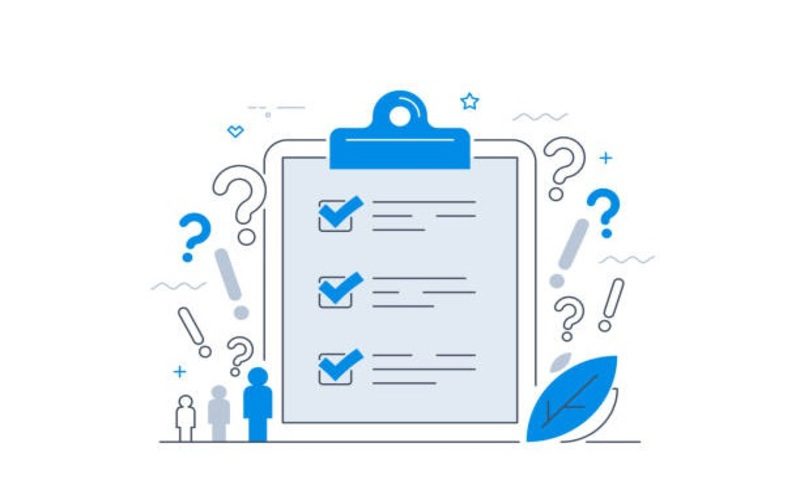What is IT process automation (ITPA)?
IT process automation (ITPA) makes use of technology to automate complex business processes, such as IT services, administration and support, into workflows to avoid the costs and time involved in otherwise managing them manually.
ITPA solutions are designed to eliminate bottlenecks and unify infrastructure by bridging the gap between multiple platforms, applications and systems. In addition to improving transparency and increasing cross-department communication, ITPA also helps reduce errors, prevent data loss and improve processing speed.
What is an IT process?
IT processes are essentially standardized workflows that help streamline all information technology-related activities within a company. With these IT processes in place, you can ensure efficient delivery of services regardless of who executes them.
On the other hand, in the absence of clearly defined IT processes, you run a higher risk of errors in your routine, IT-related activities. Examples of common IT processes include ticketing, asset management, patch management, service desk operations and more.
What are the different types of process automation?
Although ITPA is often confused with other types of process automation, it is very different in several aspects. Let’s discuss some of the different types of process automation and how they differ from ITPA.
IT process automation (ITPA)
ITPA is focused on improving efficiency by cutting back on the manual work involved in measuring and executing routine IT tasks such as executing security policies/backups, configuring new network devices or servers, patching systems and so on.
ITPA systems help reduce service delivery times and enable the perfect orchestration of multifunctional processes and workflows. In addition to this, ITPA also facilitates consistency and standardization of the different technologies and software versions available in the company. Also, in the event of a service disruption, ITPA dramatically simplifies problem-solving through automation and reduces the time needed to resolve the incident.
Robotic process automation (RPA)
As the name suggests, robotic process automation (RPA) enables all repetitive administrative activities and processes to be handled by robots that act as “virtual workers.” RPA systems involve the use of bots that have been trained to perform high-volume, repetitive tasks using machine learning. These bots are adept at performing routine IT tasks such as form checking, data entry and so on.
RPA promotes cost-saving and greater efficiency and reliability in processes. RPA systems are also great at managing workflows that involve extensive documentation and which are generally more prone to human error. Industries like healthcare, banking, human resources and supply chain benefit greatly from implementing RPA.
Business process automation (BPA)
Also known as digital transformation, business process automation (BPA) may be described as the technology-enabled automation of complex, multistep business transactions/processes. BPA can help you achieve an array of goals such as achieving digital transformation, streamlining business to make it simpler, boosting service quality, improving service delivery, reducing costs and more. BPA systems are usually tailored to suit the unique requirements of a business.
Some of the common business processes that can be automated through BPA include new employee onboarding, data entry, invoicing purchase orders and approving loan applications.
Digital process automation (DPA)
Digital process automation or DPA involves automating processes that need to be performed using multiple different applications. DPA systems may be used to automate a variety of business processes that typically require some kind of human interaction.
DPA is often considered to be the evolved version of BPM. Having said that, companies that have already implemented BPM find it easier to implement DPA. DPA is often used in enterprise digital transformation initiatives to optimize customer journeys and streamline business processes. Common business functions that can benefit from DPA include workflows such as production, IT, management, marketing and sales.
How does IT process automation work?
ITPA tools usually operate on an action-reaction system. As such, for ITPA to work, IT departments must plan for predefined events that will trigger ITPA systems while setting them up. Common events that can be set up to trigger ITPA tools include:
- Routine daily checks and upgrades
- Frequent technical issues such as system errors and bugs
- Predefined workflows such as service desk
Once the triggers have been defined, ITPA systems are ready for use. Let’s look at the step-by-step process of how an ITPA system works:
- Monitoring: ITPA systems regularly monitor business applications and track system performance metrics. ITPA systems continue to run on this step until a predefined trigger is detected.
- Trigger: Once a predefined event occurs, the ITPA system detects it and kick-starts an automated workflow.
- Reaction: The ITPA system automatically performs a task as a reaction to the trigger event. This reaction can be anything from steps to restore system performance, directing workflows to service desk, automated spreadsheet operations and so on.
What are some IT process automation use cases?
ITPA helps organizations quickly resolve IT issues and streamline management of low-value-adding activities to focus more on business priorities. Let’s discuss some of the characteristics of IT tasks that are suitable for IT process automation:
- Error-prone
- Involvement of limited human intervention
- High transaction volume
- Easily broken down into multiple explicit tasks
- Existing in a stable environment
Some of the common use cases of ITPA include:
- User management
- Automating routine tasks
- IT-related onboarding and offboarding
- Password reset
- Service desk automation
- Data access management
- System health check
- Data management
What is an example of IT process automation?
Automatic management of service requests is one of the most common examples of ITPA. Businesses can leverage automation to receive and organize help desk queries, emails and customer grievances. ITPA can also help weed out duplicate queries, automatically address FAQs and more.
What are the benefits of IT process automation?
Now that we understand what ITPA is and how it works, let’s dive into the reasons why businesses must implement it.
- Reduced operational costs: Businesses waste a lot of resources on repetitive, manual IT tasks every day. Implementing ITPA can help you automate most of these routine tasks and streamline IT management without having to increase headcount.
- Fewer human errors: By automating IT processes, you can significantly reduce the scope of human errors and minimize the risk of system malfunctions and security events. Also, since standardized best-practice responses are largely embedded within the ITPA system’s workflow, it helps further minimize the risk of errors.
- Increased productivity and efficiency: ITPA implementation help offload routine tasks from your IT department, thus boosting technician productivity and efficiency.
- Quicker detection and response rates: With constant monitoring of systems and business processes, ITPA enables faster detection of predefined trigger events. With faster detection of trigger events, you are better equipped to quickly remediate the issue before it aggravates into a bigger problem.
- Improved service levels and user experience: ITPA helps automate time-consuming manual tasks, which in turn helps improve service levels. Implementing ITPA helps businesses reduce costs and improve profits, enabling their IT departments to provide better service to their clients and enhance overall user experience.
- Superior IT services integration: ITPA facilitates seamless integration of people, processes and tools through automated workflows, thus streamlining IT management.
What are some drawbacks of IT process automation?
Having discussed the benefits of implementing ITPA, let’s now look at some of the potential cons associated with it.
- Fewer jobs for IT staff: One of the most obvious drawbacks of ITPA is the fact that automation brings with it a reduced need for IT technicians to do the same tasks. By automating most of your routine, manual IT tasks, you take away the need to have more people on the job.
- Potential for complacency: Knowing that most of the routine tasks will be taken care of automatically can end up making your IT technicians complacent about their job.
- Loss of human element: With automation replacing most of the manual tasks, ITPA brings with it a loss of human element that is fairly crucial for businesses to succeed. ITPA systems react to trigger events based on predefined processes. However, sometimes it can be more beneficial to have a human make reactive decisions based on their intuition and impulse.
- Implementation and maintenance needs: Another major drawback of ITPA is that it needs constant monitoring and maintenance to make sure it’s working properly. As such, you must test it thoroughly not only before but also after implementation. Ongoing testing and maintenance are imperative to ensure that the results of your ITPA system are either the same or better than the results you would get from employees doing the same activity. In order to achieve this, you need to constantly update your workflows.
What are IT process automation tools?
ITPA tools help streamline IT operations by automating repetitive, manual workflows, tasks and processes and bridging the gap between disparate applications. These tools can be implemented across multiple databases and systems and can help automate processes between them without the need for human intervention. In essence, ITPA tools help create a more uniform and standardized IT infrastructure.
Based on predefined control workflows, your ITPA tool can automatically remediate a system issue or send alerts or escalations to the relevant IT technician for immediate action. ITPA tools are a boon for both internal IT teams as well as MSPs struggling with multiple disparate workflows and spending too much time on routine manual tasks. ITPA tools provide your IT technicians with the flexibility they need to configure and modify processes as needed.
Automate key IT processes with Kaseya
With Kaseya VSA’s powerful policy-based automation, you can automate common IT processes, such as routine server maintenance and patch management, to reduce manual effort. Moreover, you can also auto-remediate IT incidents by running scripts in response to an alert. And that’s not all! Kaseya VSA scales with the growth of your business by allowing you to manage tens of thousands of endpoints on a single SaaS instance.
Want to know more about Kaseya’s powerful automation? Schedule a free demo with us today!





